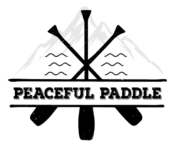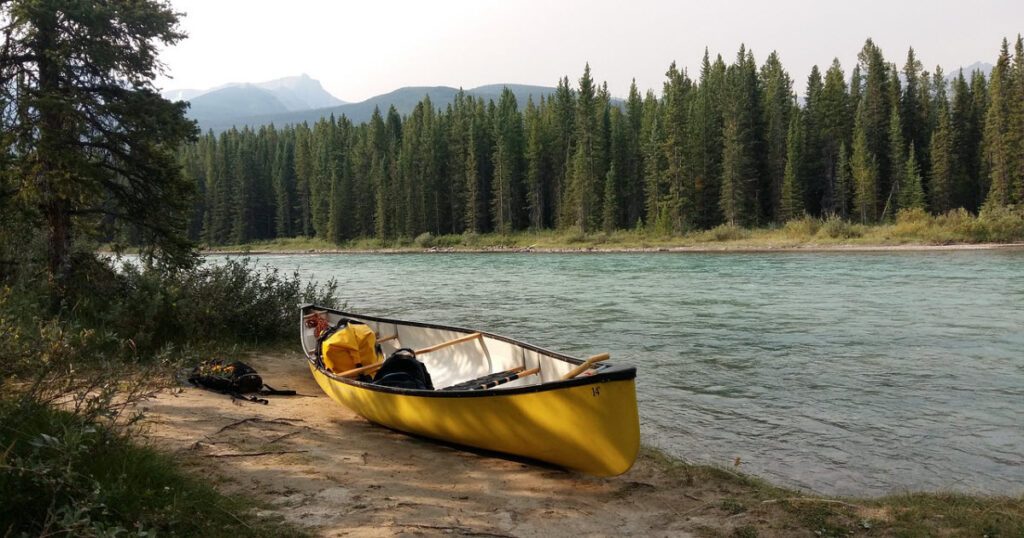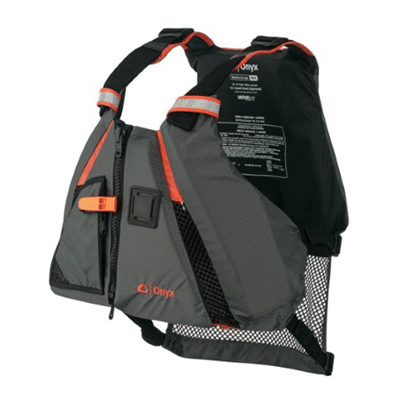Canoeing is an increasingly popular water activity all over the world. For some, it’s a form of exercise, a competitive sport, or as a way to enjoy nature up close. If you’re new to it, it will help to learn proper techniques and canoeing basics before you set out on your first trip. In this beginner’s guide, I’ll go over all the canoeing basics you need to know to get started with this fantastic recreational activity.
Let’s explore what you need to know about the history of canoeing, the different types of canoes, as well as gear and accessories. You’ll also find out about paddling strokes, together with safety tips that will come in handy when you embark on your first canoeing adventure.
A Brief History of Canoeing
Long before canoeing became a water sport and form of recreation, the Native Americans used it for transportation, hunting, fishing, trade, and even warfare. “Canoe” comes from the word “kenu” or dugout.
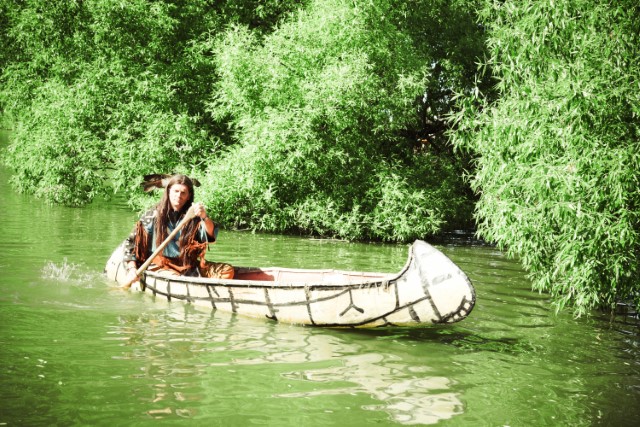
Original canoes were crafted from animal skins and large trunks, usually from birch trees. They are slender, hollow vessels that range between 3 meters to 30 meters in length.
It was in the late 1800s when Scottish lawyer and philanthropist, John MacGregor, introduced canoeing as a sport and recreation. He founded the Canoe Club in 1865, which came to be known as the Royal Canoe Club in 1873.
This paved the way for the establishment of other canoeing groups and organizations, such as the British Canoe Union (now British Canoeing) in 1936, the New York Canoe Club in 1871, the American Canoe Association in 1880, and the Canadian Canoe Association in 1900.
Types of Canoes
Just like kayaks, canoes may look the same to the untrained eye, but they come in different sizes.
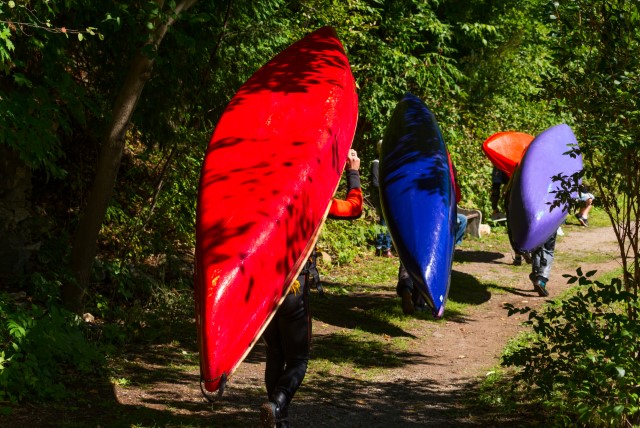
Choosing the right type of canoe will depend on:
- Your paddling plans
- The amount of gear you want to bring along
- The duration of your trip
- Whether you’re paddling alone, with a partner, or in a group
Using the proper canoe is essential to having a fun and successful trip. The most common and basic canoes include:
- Recreational canoe
- Whitewater canoe
- Racing canoe
- Specialized canoe
Let’s take a look at these below.
Recreational Canoes
Recreational canoes are the most common type of canoe. We sometimes call them cabin or city lake canoes.
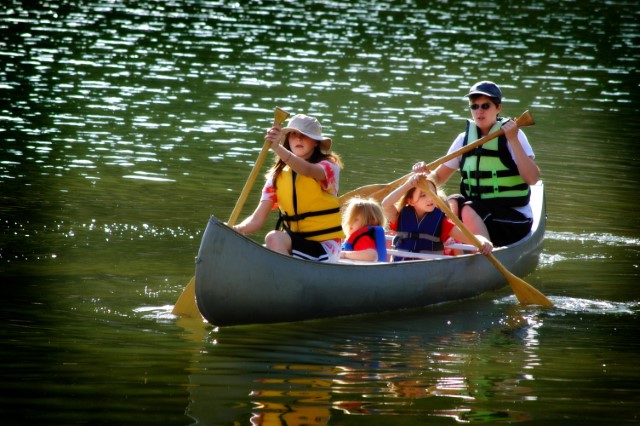
They are typically 13 to 16 feet in length and over 36 inches in width. Generally, they can accommodate two or three paddlers at a time.
You can find recreational canoes available to purchase at sporting goods shops. If you’re not ready to buy a watercraft, you can rent one at your local lake or at a summer camp.
Canoes are usually made from plastic or aluminum.
Canoes are generally suitable for flatwater paddling, and they are stable and easy to maneuver.
Whitewater Canoes
Whitewater canoes are for paddling through river rapids of varying grades. These canoes have high sides to keep water out of the craft.
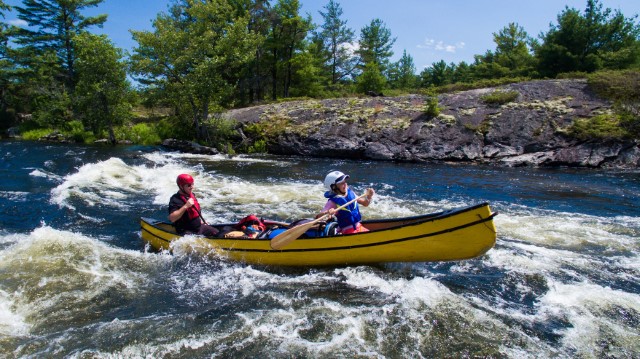
They also have a deeper rocker, or bow-to-stern curvature, which provides better control when navigating rough, choppy waters. Whitewater canoes also have slots at the bow and stern for attaching flotation bags to prevent the canoe from sinking if it flips over or takes in too much water.
Racing Canoes
Racing canoes are longer than recreational canoes, with most measuring up to 20 feet long. They are built with rigid hull materials and an asymmetrical shape from the stern to the bow.
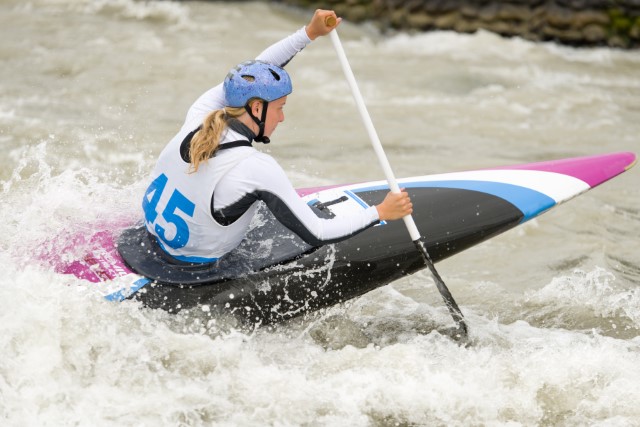
This allows them to thread through the water faster and with less effort. Some racing canoes are designed for flatwater racing, while there are also whitewater slalom canoes that have closed decks and spray skirts, similar to kayaks.
Specialized Canoes
Specialized canoes are built with a particular activity in mind. A fishing canoe, for instance, has a spot for holding a fishing rod and extra space for storing fishing gear and accessories.
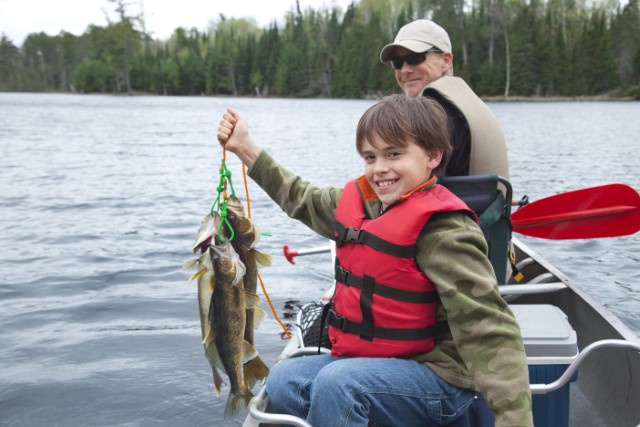
Other types of specialized canoes are the expedition canoe or the wilderness canoe, which are for long-distance trips and carrying heavy loads.
Canoeing Terminology
Like with any other kind of sport or activity, you’ve got to know the lingo! Here are some of the basic canoeing terms you’ll encounter.
Beam: The widest part of the canoe.
Bearing: The direction of your destination.
Blade: The part at the end of the paddle that is passed through the water to move the canoe.
Bow: The front-most part of the canoe.
Brace: A stroke utilized by the paddler to prevent the canoe from rolling or capsizing.
Bulkheads: The walls that form a watertight compartment in the bow and stern which also provides support and buoyancy.
Cockpit: The area on the deck where the paddler is seated.
Deck: The top of the canoe.
Eddy: Slack or counter-moving water. An area of water that moves against the main current
Eskimo roll: Maneuvering the canoe back to an upright position without exiting.
Ferry: To move the canoe laterally rather than with the current.
Freeboard: The part of the canoe that lies above the waterline.
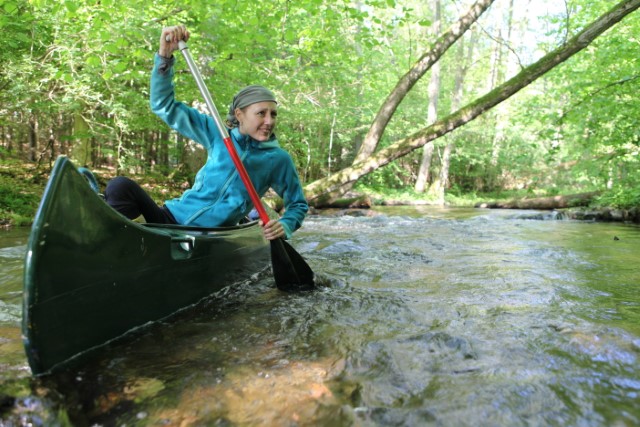
Gunnel or Gunwale: The upper edge or top side section of the canoe from bow to stern.
Hatch: The storage compartment of the canoe for storing cargo.
Heading: The direction to which the bow is pointing.
Hull: The underside, frame, or body of the canoe.
Keel: The strip below the hull that runs from stern to bow.
Knee Brace: Supports attached to the canoe where the paddler can slide his knees to gain better control
Lee: The direction away from the wind.
Lean: Deliberately tipping the canoe to ferry or regain stability.
Launch: Sliding the canoe into the water.
Pitch: The steeper section of a set of rapids.
Pool: A stretch of water with little current.
Portage: The act of carrying the canoe on dry land, at river bends, or impassable waters.
Reading Water: Determining the safest route through whitewater or rough waters.
Rocker: The curve or upward sweep from the keel to the bow or stern; the more pronounced or deeper the curve, the easier it is to pivot the canoe.
Shaft: The pole or handle of the paddle between the grip and the blade.
Skeg: The retractable steering fin along the keel, similar to a rudder.
Smoker: A violent set of rapids.
Starboard: The right side of the canoe when facing the bow.
Stern: The back end of the canoe.
Take-out: The point where you end your trip.
Tip: The end of the paddle opposite the shaft.
Wash: The rough or broken water left behind by a moving canoe, also called a wake.
Windward: Opposite of lee or leeward. The direction from which the wind blows.
Essential Canoe Paddling Strokes
Paddling is one of the basic canoeing techniques you should learn before setting out into open water. It involves different strokes that will allow you to control and move the canoe in the direction you want.
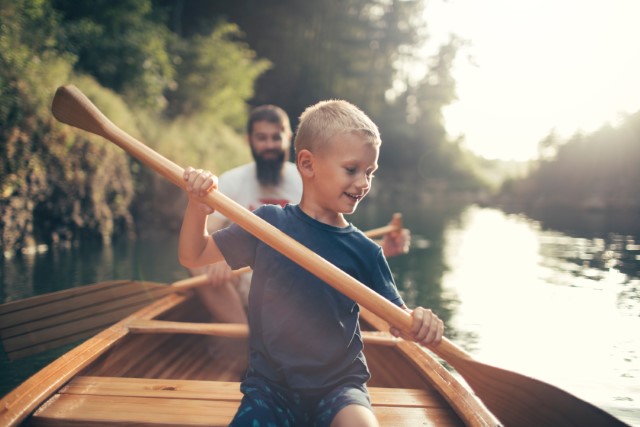
Now it’s time to learn about the basic canoe paddling strokes.
Forward Stroke
The forward stroke propels the canoe forward. You also use it when making a turn.
- Place one hand on the shaft and the other on the top grip of the paddle.
- Reach forward and place the paddle in the water. The blade of the paddle must be perpendicular to the keel line or the water.
- Pull straight along the side of the canoe, twisting your torso through the stroke.
- When withdrawing the paddle from the water, “feather” or swing it with the blade facing forward and flat above the water’s surface to reduce wind resistance.
Remember to keep a relaxed grip when performing the forward stroke. Always push down with the top hand and pull back with the lower hand, as this will push the canoe forward.
Paddle close to the side of the boat, and don’t let your arms do all the work.
Backward Stroke
The backward stroke is another basic canoeing technique. It puts the canoe in reverse.
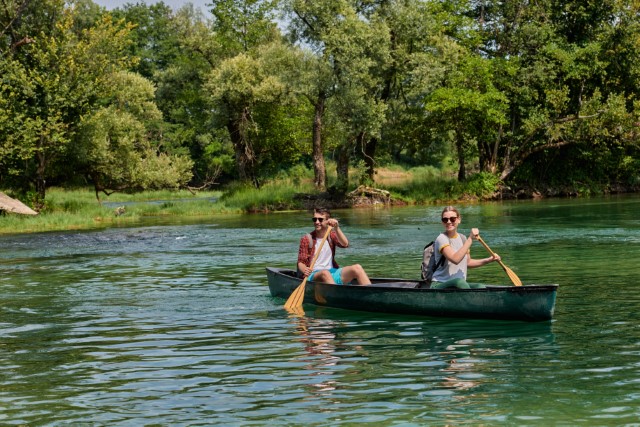
You also use it for slowing down the canoe, and it’s also appropriate for when you’re coming to a landing or take-out point.
Here’s how you do a backward stroke:
- Reach back with both hands and put the paddle in the water to the rear of your body.
- Pull forward while keeping the flat side of the blade perpendicular to the keel line.
- Feather the blade as you reach back for another stroke.
As with the forward stroke, keep a loose, relaxed grip on the paddle and use your torso to provide power in your strokes. Keep both arms straight throughout all phases of the stroke.
J-Stroke
The J-Stroke is similar to the forward stroke, but it ends with a hook or by twisting the paddle with your top grip so it traces a letter “J” in the water.
- Start with a forward stroke.
- Towards the end of the stroke, when the paddle blade crosses your body, rotate the paddle so the blade turns outward, making an imaginary J away from the canoe.
Solo paddlers or stern paddlers typically perform this stroke to keep the canoe moving in a straight line. If you’re in a tandem canoe and your front paddler is stronger than you are, you may not need to perform the J-Stroke as often.
Draw Stroke
The draw stroke is for moving the canoe sideways or changing the canoe’s direction. It is sometimes called the “pull-to” stroke.
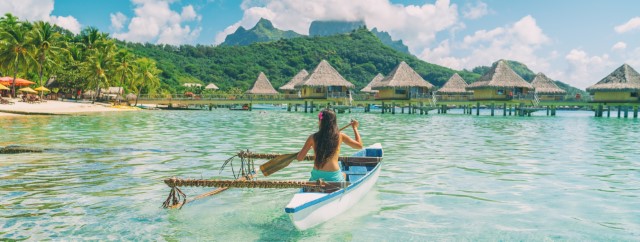
Here’s how to do the draw stroke:
- Stretch the paddle out over the water and reach as far as possible with the shaft hand.
- Place the paddle in the water, then pull the shaft inward towards your hip.
In tandem canoeing, performing the draw stroke on the same side will move the canoe sideways, while doing the stroke on opposite sides will rotate the canoe rapidly.
Pry Stroke
The pry or push stroke is the opposite of the draw stroke. It will have the same effect as the draw stroke, but the canoe will move in the opposite direction, pushing it away from the paddling side.
- Place the paddle blade in the water, with the paddle parallel and as close to the canoe as possible.
- Tilt the paddle a bit, with your gripping hand out over the water as far as you can reach.
- Pull in the paddle with your gripping hand while pushing it out with your shaft hand.
Sweep Stroke
The sweep stroke turns the canoe away from the paddling side. This stroke may also be done in the opposite direction, called the reverse sweep, which will turn the canoe towards the paddling side.
- Place the paddle in the water just past your feet and near the front of the canoe. The paddle blade must be facing away from the canoe.
- Pull the blade in a big arc starting from the bow and the stern as the finishing point.
Getting In and Out of a Canoe
Entering and exiting a canoe may look easy, but both require certain techniques to do them safely and properly.
Launching the Canoe
This is one of the most essential canoeing basics. The best way to launch the canoe is from the shore.
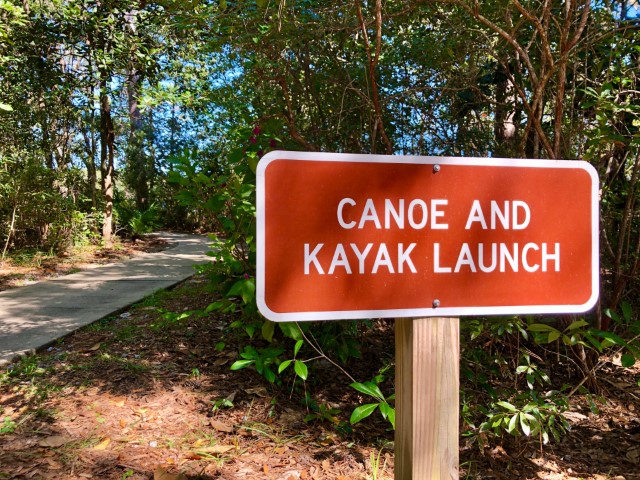
Here are the steps for launching your canoe:
- First, you need to make sure that the bow of your canoe rests in the water and the stern onshore.
- Reach across to the outside gunnel with one hand, and then set one of your legs into the center of the canoe.
- Grab the inner gunnel with your other hand, then carefully bring your other leg into the canoe. Remember to keep your weight low to keep the canoe stable.
Exiting the Canoe
Just like launching a canoe is one of the essential basics, getting out of the canoe is just as important.
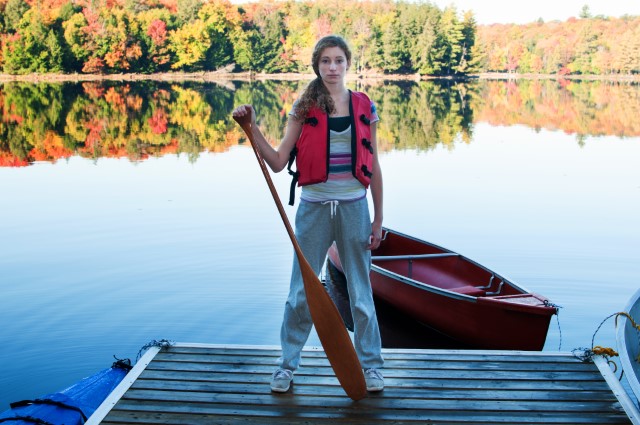
- Slow down and stop the canoe before it hits the shore.
- Put your hands on each gunnel and walk towards the bow, following the centerline of the canoe.
- Stay low as you walk as this will keep the canoe from moving.
- Continue to hold on to the gunnels to support yourself, then turn around and step out of the boat with your back to the shore.
Canoe Gear and Equipment
In addition to a canoe and a paddle, you may need to bring a few more supplies to make your paddling experience safer and more enjoyable.
Personal Floatation Device (PFD)
Wearing a life jacket or PFD is a safety essential, whether you are a good swimmer or not.
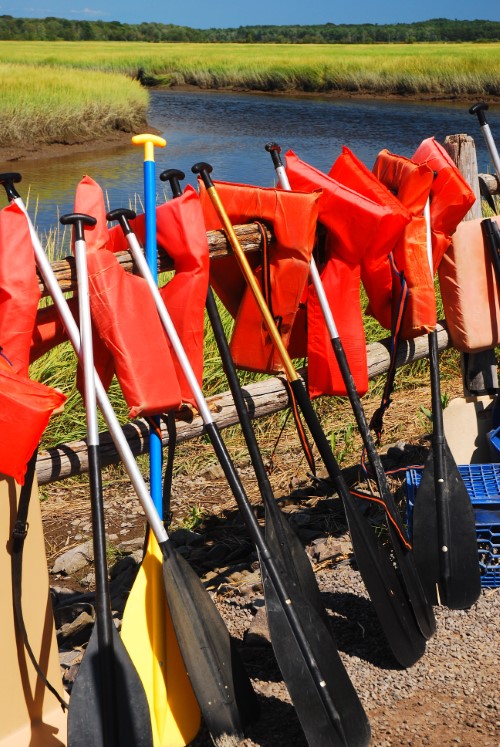
In fact, in most states in the US, laws require paddlers to wear a life jacket when canoeing or kayaking.
Get your PFD professionally fitted. An improperly fitting life jacket is hazardous.
Helmet
Helmets are another safety essential especially if you’re whitewater canoeing, where the chances of hitting rocks or rough waters are high.
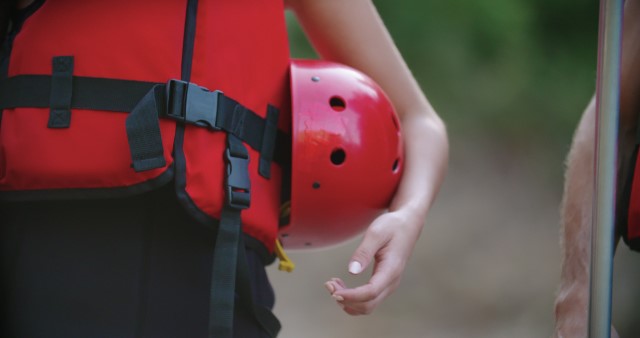
Floatation Bags
Tying float bags in the stern and bow of the canoe is a must when you’re going to canoe in whitewater or rapids.
They will help prevent the canoe from sinking in case it flips over.
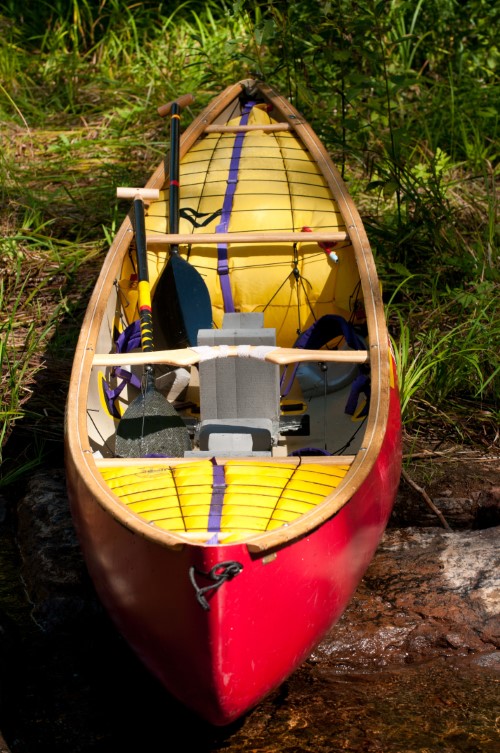
Additional Clothing
While most paddlers prefer not to bring extra clothing such as a wetsuit or a dry suit, these may come in handy when weather conditions change.
Throwable Flotation Device
In some states, carrying a throwable flotation device is a requirement for canoes longer than 16 feet. This may be used in cases of emergency.
Dry Bag
You may need this for storing snacks or other essentials such as a first-aid kit, wallet, or camera dry. Make sure it is attached to the inside of the canoe so it won’t fall off.
Rope Bag
This is a piece of standard rescue equipment which consists of a bag stuffed with a length of rope. Some rope bags can be worn around the waist or attached to your PFD.
Knife
A knife may be useful in case your canoe capsizes or flips over, and you’re stuck under it, or became tangled in a rope.
Canoeing Safety Tips
Canoeing, especially in flat water, is one of the safest outdoor activities you can try. But being prepared and having a good understanding of canoeing basics is essential in case things go wrong.
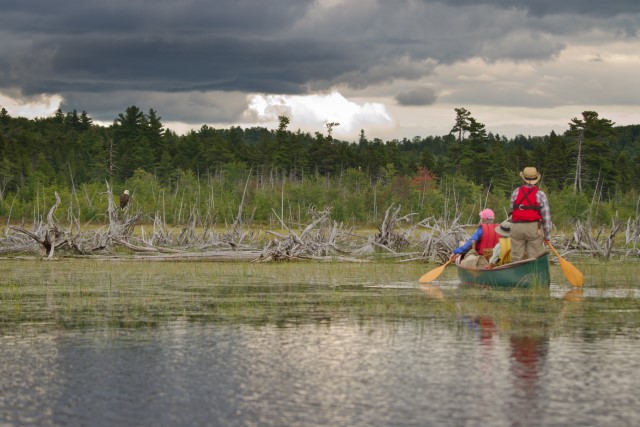
Here are some safety tips to keep in mind.
Take a class or join a club.
Doing this will help you gain the needed information on safer paddling, how to properly enter and exit the canoe, and the basic paddling techniques. You will also be able to know your state’s safety rules and regulations on boating.
Dress appropriately.
The weather may be nice and sunny, but the weather can change suddenly. If you decide to go for a swim or if your canoe flips over, you might find yourself swimming in cold water and be at risk of hypothermia.
Wear Your Life Jacket
Wear a life jacket that is appropriate for your body size. Your helmet should also have sufficient drain holes to drain water instantly.
Choose an Appropriate Spot
Choose a small, calm body of water like lakes and ponds. Areas with no powerboat traffic are also ideal.
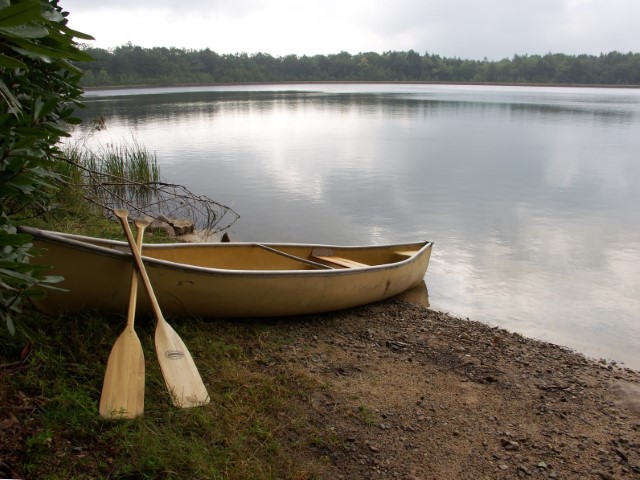
Check the waterway where you plan to paddle from land. Look out for possible hazards that you may encounter.
Check the Weather
Check the weather before setting out to the open water.
Canoe With Others
Don’t canoe by yourself if you’re paddling for the first time.
Also, make sure you let your friends or family know when and where you will go paddling.
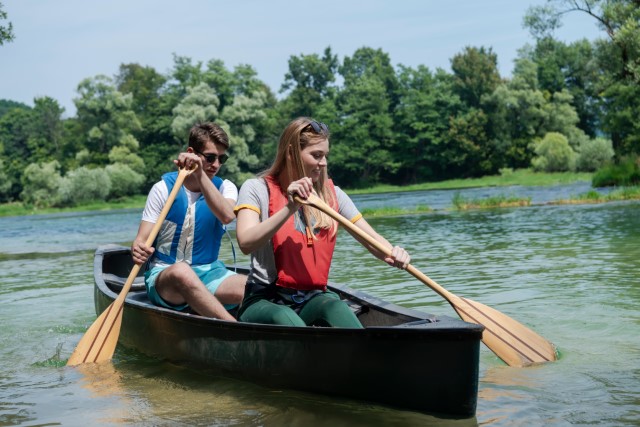
Be Prepared for Emergencies
Bring emergency call equipment such as a marine radio, cellphone, a sounding device or distress flags to let others know you need rescue.
Check Your Gear
Check your canoe and gear for any signs of damage before paddling out.
Stay Away From Alcohol
Never use alcoholic drinks or mind-altering substances before or during paddling.
Take time to exercise and be physically fit to avoid injury.
Take Plenty of Breaks
Keep your paddling under two hours to avoid over-fatigue.
Final Thoughts On Canoeing Basics
Canoeing is for everyone who loves the outdoors or anyone who wants to try a new hobby or sport. With this guide, you are now equipped with the basics, which can help you plan your first canoeing adventure.
You’ve learned about:
- The history of canoes
- Types of canoes
- Canoeing terminology
- Paddling strokes
- Getting in and out of a canoe
- Canoe gear and equipment
- Safety tips for canoeing
The only question now is: when are you heading out on the lake? Have a fantastic time!
